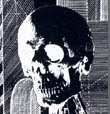
Inspiration is where you find it.
This past Saturday, I was walking down Cambridge Street in, appropriately, Cambridge, Mass., when what to my wondering eyes should appear but a box of discarded books by the curbside, and right on top, a damaged but complete copy of The Successful Stockman and Manual of Husbandry, circa 1899-1900, King-Richardson Co., Springfield, Mass.
A quick leaf-through on the street was all I needed to recognize the treasure. This handy guide is all-encompassing in its practical helpfulness, full of charts, formulas, engravings and -- best of all -- multi-layered, full-color "mannikins" of livestock anatomy. The covers of this copy are rotted, the spine exposed, the stitching loose, and the pages badly aged, but there is something rich and warm and aesthetically suggestive in both the book and its contents. I had found a relic from another life and another time, and there was no way I was not bringing it back to my studio.
Naturally, I also Googled this unusual find. I admit I was surprised to learn that The Successful Stockman was such a standard that it seems to be in the library of every college or university in the US that has ever offered any kind of agricultural or veterinary program. For example, I took special note of this mention in a 2001 article of the Fresno State News regarding the Fresno State University Library's one millionth acquisition:
"From the first book ever acquired for the Library, a 1900 copy of Andrew Gardenier's The Successful Stockman and Manual of Husbandry to the latest books on Internet commerce, materials collected for the Library have always mirrored the subjects taught in the classroom."Google Books offers some excerpts from The Stockman, if you're curious to see what I'm so worked up about, though it barely scratches the surface. I am definitely going to have to copy the whole chapter on "Standard Receipts" before I make any art out of it, especially the recipes for pastes and glues.
As beaten up as this copy is, The Successful Stockman has yet successes to achieve, and I am looking forward to seeing if an artist at the start of the 21st century can make as much of it as a farmer at the start of the 20th.
Dear Readers, I will keep you posted.
-- Jen
PS: Thanks to GnI for the Arting Life's motto.




No comments:
Post a Comment